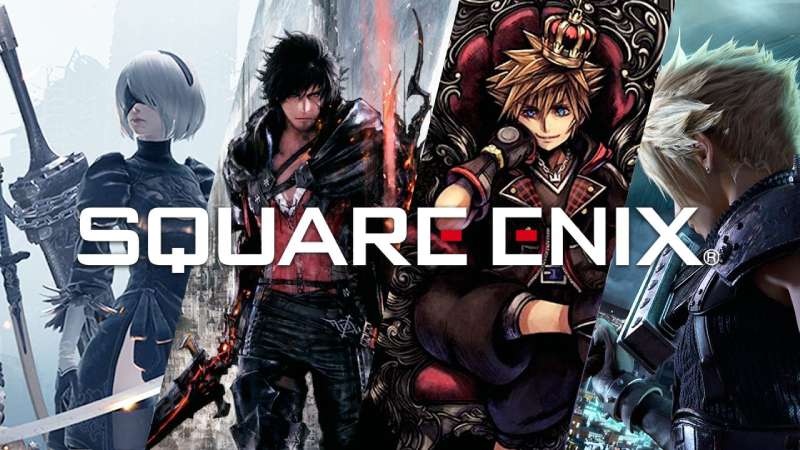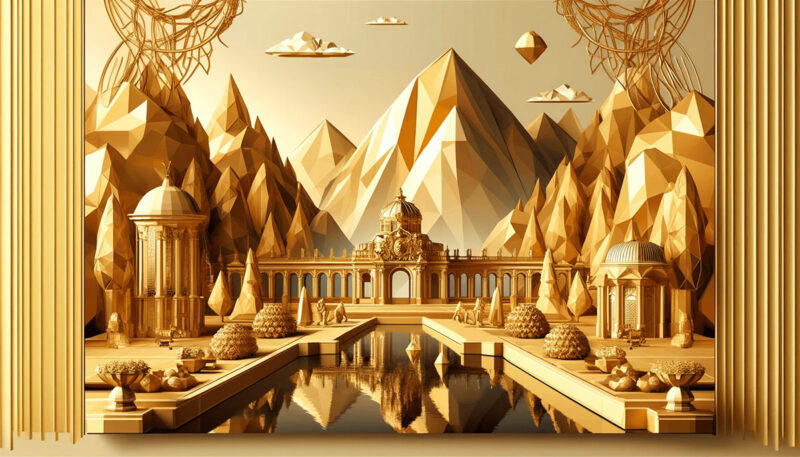A Guide to the Most Popular 3D Game Art Styles and Techniques
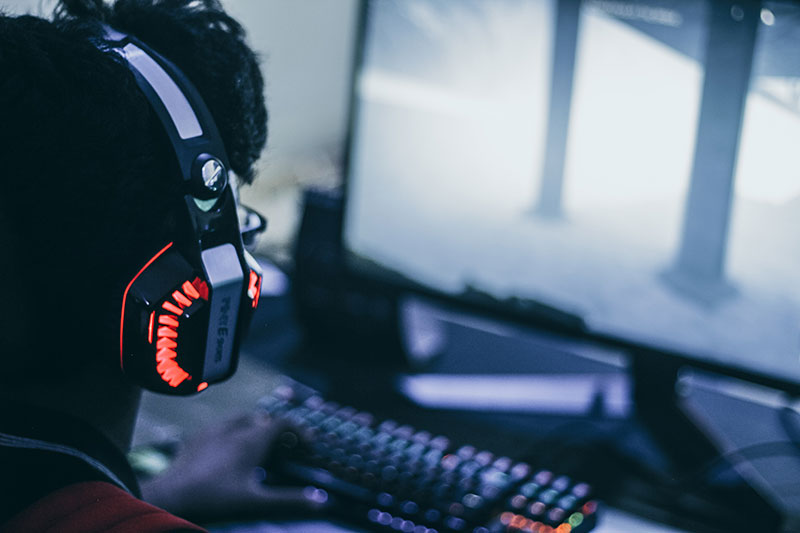
Game art styles and techniques are important for game development because they help create a unique visual identity, mood, atmosphere, and gameplay experience for different types of games. 3D game art is especially popular because it allows for more realism, immersion, interactivity, and creativity than 2D game art.
Some examples of 3D game art styles are:
- Realism: transferring the real world to a digital platform with high-quality graphics, textures, lighting, and physics.
- Low Poly: using simple geometric shapes and minimal details to create stylized and abstract visuals.
- Fantasy Realism: combining realistic elements with fantastical themes such as magic, dragons, or steampunk.
- Cartoony: using exaggerated proportions, bright colors, and expressive animations to create humorous and playful games.
- Collage: using different materials such as paper, fabric, or metal to create a mixed-media effect.
Different 3D game art styles and techniques have different advantages and disadvantages depending on the genre, platform, audience, budget, and vision of the game. Therefore, it is important for game developers to understand how to choose and apply them effectively.
Realism

Source: Forza Horizon 4
Realistic 3D game art style(or realism) is an art style that aims to create a digital representation of reality as close as possible. It uses high-quality graphics, textures, lighting, shadows, physics, animations, and sound effects to create an immersive and believable experience for the player. Realistic 3D game art style is often used for genres such as action-adventure, first-person shooter, racing, simulation, horror, or sports.
Examples of Popular Games That Use Realistic 3D Game Art Style
There are many games that use realistic 3D game art style to create stunning visuals and gameplay. Here are some examples:
- Red Dead Redemption 2: This open-world western game features a vast and detailed world with dynamic weather effects, wildlife interactions, realistic facial expressions, and cinematic cutscenes.
- The Last of Us Part II: This post-apocalyptic survival game showcases a gritty and emotional story with lifelike characters, environments, animations, and combat.
- Forza Horizon 4: This racing game offers a beautiful and diverse landscape of Britain with changing seasons, dynamic weather conditions, and hundreds of cars.
- Resident Evil Village: This horror game delivers a terrifying atmosphere with photorealistic graphics, creepy enemies, and immersive sound design.
Techniques Used to Achieve a Realistic Look in 3D Games
Creating realistic 3D games is not an easy task. It requires a lot of technical knowledge, artistic skills, and creativity. Here are some techniques used by game developers to achieve a realistic look in 3D games:
- High-poly modeling: This technique involves creating complex and detailed models with many polygons (the basic units of 3D graphics). High-poly models can capture more details and nuances than low-poly models.
- High-resolution textures: These are images that cover the surface of 3D models to give them color, pattern, and texture. High-resolution textures can make objects look more realistic and varied than low-resolution textures.
- Advanced lighting: This technique involves using different types and sources of light to create realistic shadows, reflections, and colors. Advanced lighting can enhance the mood and atmosphere of a scene and make it more dynamic and interactive.
- Motion capture: This technique involves recording the movements of real actors or animals and transferring them to digital characters or objects. Motion capture can make animations look more natural and expressive than manual animations.
What Is Low Poly Game Art Style?
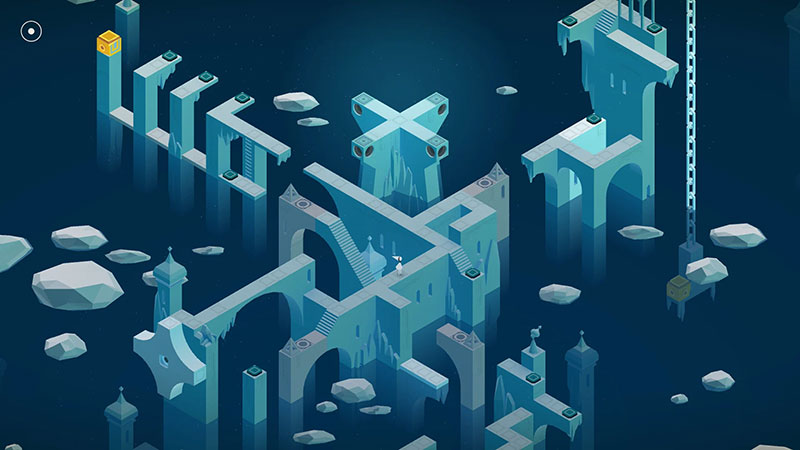
Source: Monument Valley
Low poly game art style is an art style that uses simple geometric shapes and minimal details to create stylized and abstract visuals. It favors straightforward colors and geometry over realism and complexity. Low poly game art style originated as a product of hardware limitations, but it is now considered a style in and of itself, with its iconic blocky imagery gaining traction among gamers and artists. Low poly game art style is often used for genres such as puzzle, platformer, adventure, or indie.
Examples of Popular Games That Use Low Poly Game Art Style
There are many games that use low poly game art style to create unique and memorable experiences. Here are some examples:
- Monument Valley: This puzzle game features a minimalist and surreal world inspired by M.C. Escher’s optical illusions.
- Journey: This adventure game offers a beautiful and emotional journey through a vast and mysterious desert.
- Fez: This platformer game plays with perspective and dimension to create a charming and colorful pixelated world.
- Superhot: This action game uses a minimalist and contrasted aesthetic to create an innovative gameplay mechanic where time moves only when you move.
Techniques Used to Achieve a Low Poly Look in Games
Creating low poly games is not as easy as it seems. It requires a lot of artistic vision, skill, and balance. Here are some techniques used by game developers to achieve a low poly look in games:
- Low-poly modeling: This technique involves creating models with fewer polygons (the basic units of 3D graphics) than usual. Low-poly models can reduce the rendering time and memory usage of a game, as well as create an abstract and stylized look.
- Flat shading: This technique involves using solid colors without gradients or shadows to shade the models. Flat shading can create a clean and simple look that emphasizes the shapes and forms of the models.
- Cel shading: This technique involves using thick outlines and bright colors to give the models a cartoon-like appearance. Cel shading can add more expression and personality to the models than flat shading.
- Voxelization: This technique involves converting 3D models into 3D pixels called voxels. Voxelization can create a pixelated look that resembles retro games or Lego bricks.
Fantasy Realism
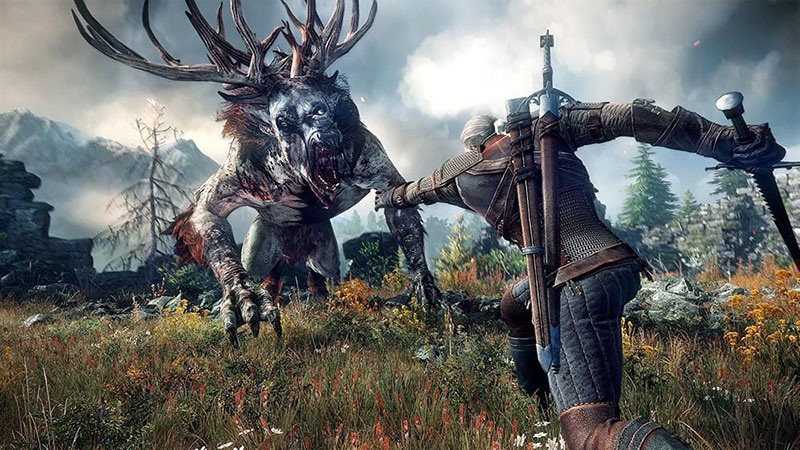
Source: Witcher 3
Fantasy realism game art style is an art style that uses realistic graphics and physics to create fantasy, steampunk, or sci-fi settings that are not possible in our real life. Fantasy realism game art style often involves aliens, races, and creatures that are not real but are depicted realistically within the game world. Fantasy realism game art style also produces environments that do not exist on our planet but fundamentally correspond to our perceptions of structure, coloring, and lighting. Fantasy realism game art style is often used for genres such as adventure shooters, quests, and action/RPG.
Examples of Popular Games That Use Fantasy Realism Game Art Style
There are many games that use fantasy realism game art style to create stunning and immersive experiences. Here are some examples:
- The Witcher 3: Wild Hunt: This action/RPG game features a dark and gritty fantasy world full of monsters, magic, and moral choices.
- Horizon Zero Dawn: This action/adventure game offers a post-apocalyptic world where nature has reclaimed the land and machines have become the dominant species.
- Bioshock Infinite: This first-person shooter game presents a steampunk city floating in the sky and ruled by a religious fanatic.
- Mass Effect: This sci-fi RPG series explores a vast and diverse galaxy populated by various alien races and factions.
Techniques Used to Achieve a Fantasy Realism Look in Games
Creating fantasy realism games is not as easy as it seems. It requires a lot of artistic vision, skill, and balance. Here are some techniques used by game developers to achieve a fantasy realism look in games:
- High-poly modeling: This technique involves creating models with high levels of detail and complexity using many polygons (the basic units of 3D graphics). High-poly models can create realistic and detailed visuals that enhance immersion and believability.
- PBR shading: This technique involves using physically based rendering (PBR) to simulate how light interacts with different materials. PBR shading can create realistic and consistent lighting effects that match real-world physics.
- HDR lighting: This technique involves using high dynamic range (HDR) to capture a wider range of brightness values than normal. HDR lighting can create realistic and dramatic lighting effects that enhance contrast and mood.
- Post-processing effects: These are various effects applied after rendering such as bloom, motion blur, depth of field etc. Post-processing effects can add more polish and atmosphere to the visuals.
Cartoony
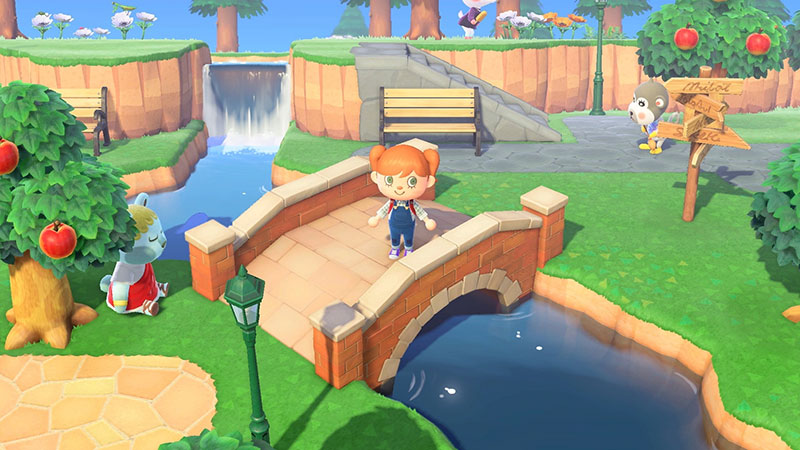
Source: Animal Crossing
Cartoony game art style is a term that refers to a type of visual design that uses exaggerated shapes, colors, and expressions to create a fun, whimsical, and appealing look for games. Cartoony games often contrast with realistic games, which aim to mimic the appearance of real-world objects and environments.
Examples of Popular Games That Use Cartoony Art Style
There are many examples of popular games that use cartoony art style across different genres and platforms. Here are some of them:
- Overwatch: A team-based shooter game that features colorful and diverse characters with stylized proportions and animations.
- Fall Guys: A multiplayer party game that involves cute and clumsy bean-shaped characters competing in various obstacle courses.
- Animal Crossing: A life simulation game that allows players to create their own island paradise with adorable animal villagers and customizable items.
- Super Panda Rush: A casual mobile game that challenges players to deliver food orders as fast as possible while avoiding obstacles and enemies using a cute panda character.
Techniques Used to Achieve a Cartoony Look in 3D Games
Creating a cartoony look in 3D games requires careful attention to various aspects of art direction, such as modeling, texturing, lighting, shading, animation, and effects. Here are some techniques used by artists to achieve a cartoony look in 3D games:
- Modeling: Cartoony models usually have simplified shapes with smooth curves and rounded edges. They also have exaggerated features such as big eyes, noses, mouths, ears, etc. The models should have consistent proportions and scale throughout the game world.
- Texturing: Cartoony textures usually have bright and saturated colors with minimal details and gradients. They also have stylized patterns such as dots, stripes, checks, etc. The textures should match the mood and theme of the game.
- Lighting: Cartoony lighting usually has soft shadows with high contrast between light and dark areas. It also has vibrant colors with warm or cool tones depending on the time of day or location. The lighting should create a sense of depth and atmosphere in the game world.
- Shading: Cartoony shading usually uses cel-shading or toon-shading techniques that create flat or gradient colors with sharp outlines or silhouettes. It also uses rim lighting or backlighting effects that highlight the edges of the models. The shading should enhance the shapes and forms of the models.
- Animation: Cartoony animation usually uses squash-and-stretch principles that exaggerate the movements of the models. It also uses anticipation, follow-through, overlapping action, secondary action, and other principles that add life and personality to the models. The animation should convey the emotions and intentions of the characters.
- Effects: Cartoony effects usually use particles, sprites, or meshes that simulate smoke, fire, water, dust, etc. They also use motion blur, glow, bloom, or other post-processing effects that add dynamism and polish to the scene. The effects should support the gameplay and feedback of the game.
Collage
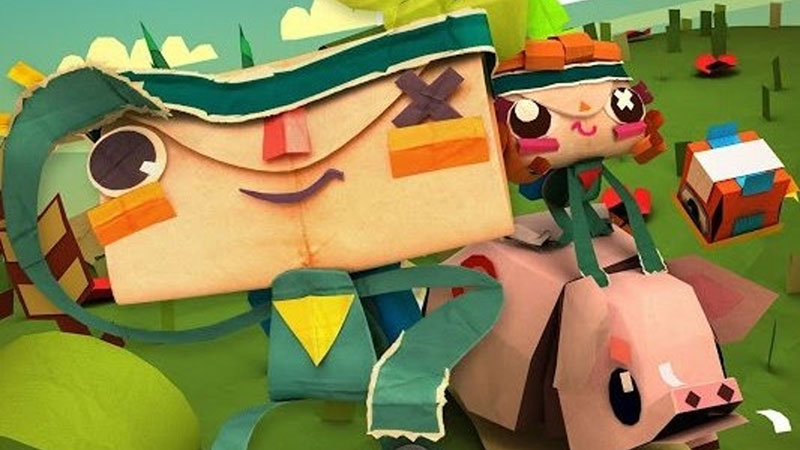
Source: Tearaway
Collage game art style is a term that refers to a type of visual design that uses cut-out images, textures, and shapes from different sources to create a unique and creative look for games. Collage games often contrast with traditional games, which use consistent and coherent art styles.
Examples of Popular Games That Use Collage Art Style
There are not many examples of popular games that use collage art style, as it is a relatively rare and unconventional choice. However, here are some of them:
- Don’t Starve: A survival game that features hand-drawn characters and environments with paper-like textures and cut-out effects.
- Doodle Jump: A casual game that involves jumping on platforms with doodle-like graphics and collage elements such as stickers, photos, and drawings2.
- Tearaway: A platformer game that uses paper-craft aesthetics and allows players to interact with the world by cutting, folding, tearing, and sticking paper pieces.
Techniques Used to Achieve a Collage Look in 3D Games
Creating a collage look in 3D games requires careful attention to various aspects of art direction, such as modeling, texturing, lighting, shading, animation, and effects. Here are some techniques used by artists to achieve a collage look in 3D games:
- Modeling: Collage models usually have low-poly shapes with sharp edges and irregular angles. They also have mismatched parts and materials that create a sense of randomness and diversity.
- Texturing: Collage textures usually have high-resolution images with realistic details and colors. They also have mixed patterns and styles that create a sense of contrast and variety.
- Lighting: Collage lighting usually has hard shadows with low contrast between light and dark areas. It also has neutral colors with subtle tones depending on the mood or theme of the game. The lighting should create a sense of flatness and simplicity in the game world.
- Shading: Collage shading usually uses unlit or diffuse techniques that create solid colors with no highlights or reflections. It also uses alpha blending or masking effects that create transparent or cut-out areas. The shading should enhance the textures and forms of the models.
- Animation: Collage animation usually uses rigid-body physics or key-frame techniques that create realistic or exaggerated movements of the models. It also uses particle systems or sprite sheets that create dynamic or static effects. The animation should convey the gameplay and feedback of the game.
- Effects: Collage effects usually use post-processing techniques such as color grading, vignette, noise, or chromatic aberration that add distortion or imperfection to the scene. They also use overlay elements such as text, icons, or stickers that add information or decoration to the scene. The effects should support the narrative and aesthetic of the game.
Conclusion
In this article, we have explored some of the most common and popular 3D game art styles and techniques, such as realistic, stylized, cartoony, and collage. We have also seen some examples of games that use these art styles and techniques effectively and creatively.
Choosing the right art style and techniques for a game is crucial for creating a memorable and immersive experience for the players. It can also help to convey the mood, theme, genre, and message of the game. Therefore, game developers and artists should carefully consider their artistic vision and goals before deciding on an art style and technique.
Choosing an art style and technique is not a one-time decision. It is an ongoing process that requires constant experimentation and innovation. Game developers and artists should always be open to new ideas and inspirations from other sources, such as art history, culture, nature, technology, etc. They should also be willing to challenge themselves and push the boundaries of what is possible in 3D game art.
By doing so, they can create unique and original games that stand out from the crowd and delight the players.
- Light Up Your Designs with These Light Color Palettes - 19 April 2024
- How to Measure Brand Loyalty Effectively - 19 April 2024
- The Square Enix Logo History, Colors, Font, And Meaning - 18 April 2024




